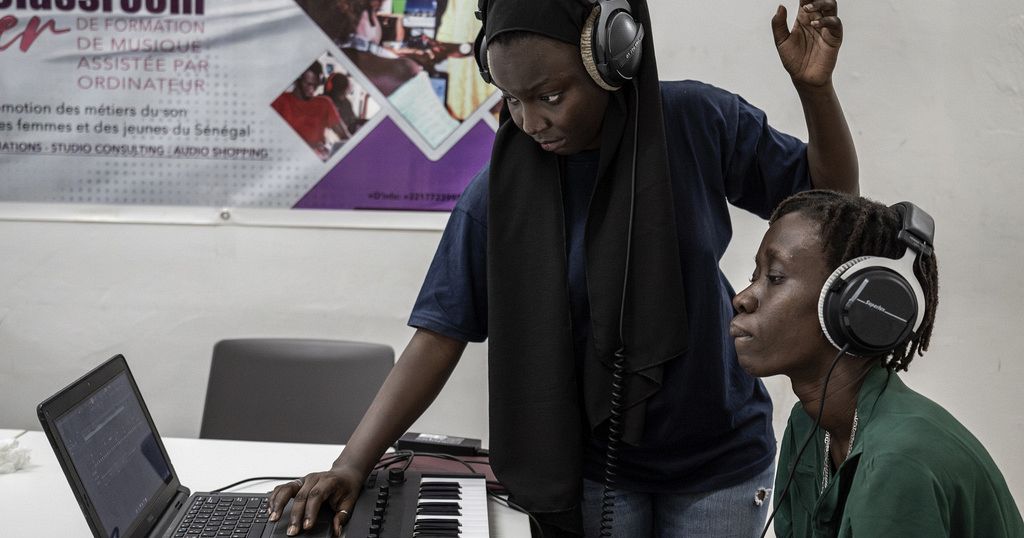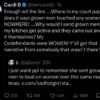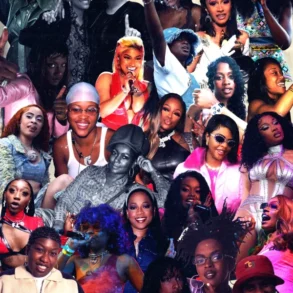
In a classroom at Senegal’s House of Urban Culture, tucked away in the narrow streets of Dakar’s Ouakam neighborhood, Aminata Thiam clapped her hands in time with a beat she created on her computer.
She is teaching a beatmaking class to five young women, each of them working intently on beats of their own on the computers in front of them.
Thiam is a beatmaker, and one of only a few women in Senegal who call themselves such. Her stage name is “Myamy the Ay Girl,” a mix of English and Wolof that means “the girl who can”.
Beatmaking, she says, is the art of “making beats, making rhythms.” An art form that started in the ’70s and ’80s in the U.S. hip hop scene, beatmaking has gained popularity in Senegal thanks to the proliferation of beatmaking software.
The country’s hip hop scene is thriving compared to many West African countries, but conservative ideas about the role of women in society still abound.
Women are still sorely underrepresented in beatmaking, as in all parts of the country’s hip hop scene.
Thiam’s current beatmaking class here is only open to women, she says a necessity if there is to be any kind of equilibrium in the field.
“Not just for music, but for audiovisual work, for cinema,” she said, emphasizing that knowing how to make music on a computer isn’t just for hip hop.
The question of accessibility looms over much of the House of Urban Culture’s work in Senegal. Amadou Fall Ba was the coordinator of the House of Urban Culture for 10 years, and now works with the city of Dakar on an initiative to create more public spaces for young people in an aim to make urban culture more accessible.
He says hip hop came to Senegal through the country’s middle class, and eventually made its way to the masses. He says that now, 80% of the stars in Senegal’s larger urban culture scene are from working class neighborhoods. Women are still severely underrepresented though, he said.
“Women aren’t that numerous in this scene, even though according to the last census with the National Agency of Statistics and Demography men and women in Senegal have more or less the same numbers. About 50% each. So for me, in terms of the democratization of urban cultures, we have a lot of work to do to have young women start taking part in this culture, to not be scared,” he said.
In Thiam’s beatmaking class, the room is silent, each student lost in a different world underneath noise canceling headphones. After six weeks of classes they are now able to produce beats of their own.
As they continued working, Thiam stepped outside in the courtyard to speak about her own history. She says there are only three women beatmakers in Senegal, and she hopes that the more women are active in beatmaking, the more other women will be inspired to start.
“If we train women who are capable of going far in this industry, this will encourage other women to join us,” she said.
This post was originally published on this site be sure to check out more of their content.







